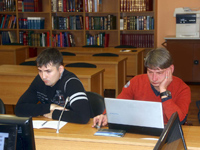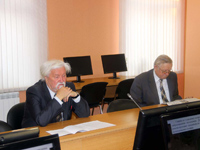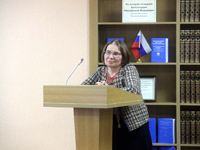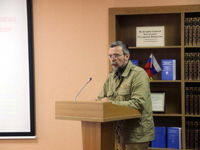ASU archaeologists study migration of ancient Siberian peoples through fossil animals’ DNA
The International Conference “Archaeology of West Siberia and Altai: Interdisciplinary Research Practices” finished its work on January 14 at Altai State University.
The conference was dedicated to the 70th birthday of Russian archaeologist, Doctor of History, Professor
Yu.F. Kiryushin. The participants included more than 50 scientists-archaeologists from Russia, Japan, Mongolia and Kazakhstan. The relevant issues of the ancient history of Siberia, particularly of Altai territory, were in the limelight of the conference. Yu.F. Kiryushin commented on the conference:
“One of the important aspects of the conference is paying attention to interdisciplinary studies in archaeology. This is synthesis of biology, chronology, geology and other accompanying sciences. Such complex research is conducted by Altai State University archaeologists. For example, we have human and domestic animals bones analyzed in England. It allows us to monitor the development of cattle farming types from antiquity to modern times. In particular, we can find out which horses or cattle species lived in the past, where they had come from, how they had got to Siberia. Archaeology has become sciences collector over the recent years. We have turned from individual work to joint research. The synthesis of sciences produces overwhelming results!”
According to Professor Kiryushin, it has become possible to study flora of ancient South Siberia through fossil remains of the plants. Nobody in Russia has carried out serious research of ancient fauna and flora of Siberia yet. ASU archaeologists’ research results show that different housekeeping types existed simultaneously in the remote age and did not change progressively, as it was considered earlier. For instance, modern archaeological studies have confirmed that cattle farming and agriculture were practiced in Kulunda, hunting and fishing were widespread in Byisk region and Altai foothills, sheep breeding was developed in the Ob area from Barnaul to Kamen-na-Obi.
Vice-Rector for Scientific and Innovative Development A.A. Tishkin spoke on ASU archaeologists’ achievements and research results, which were presented on the previous conference:
“Our university is ready for establishment of the center of excellence in archaeology. Such centers have already been opened in Tomsk and Novosibirsk. We have everything to bring this idea into life: the tight-knit team, publications in highly rated journals, modern equipment, regular internships in the leading foreign universities. We have agreements with Cambridge, Queen’s University of Belfast, where we have isotopic and radiocarbon analysis done. We also develop our own centers. For example, there are centers connected with paleogenetic research, where we act as pioneers. Even the preliminary results of sheep’s mitochondrial DNA sequencing solve the problems of migration in the framework of Eurasian aspect."
In the near future ASU archaeologists are going to present the results of the latest research on migration of ancient South Siberian peoples.




